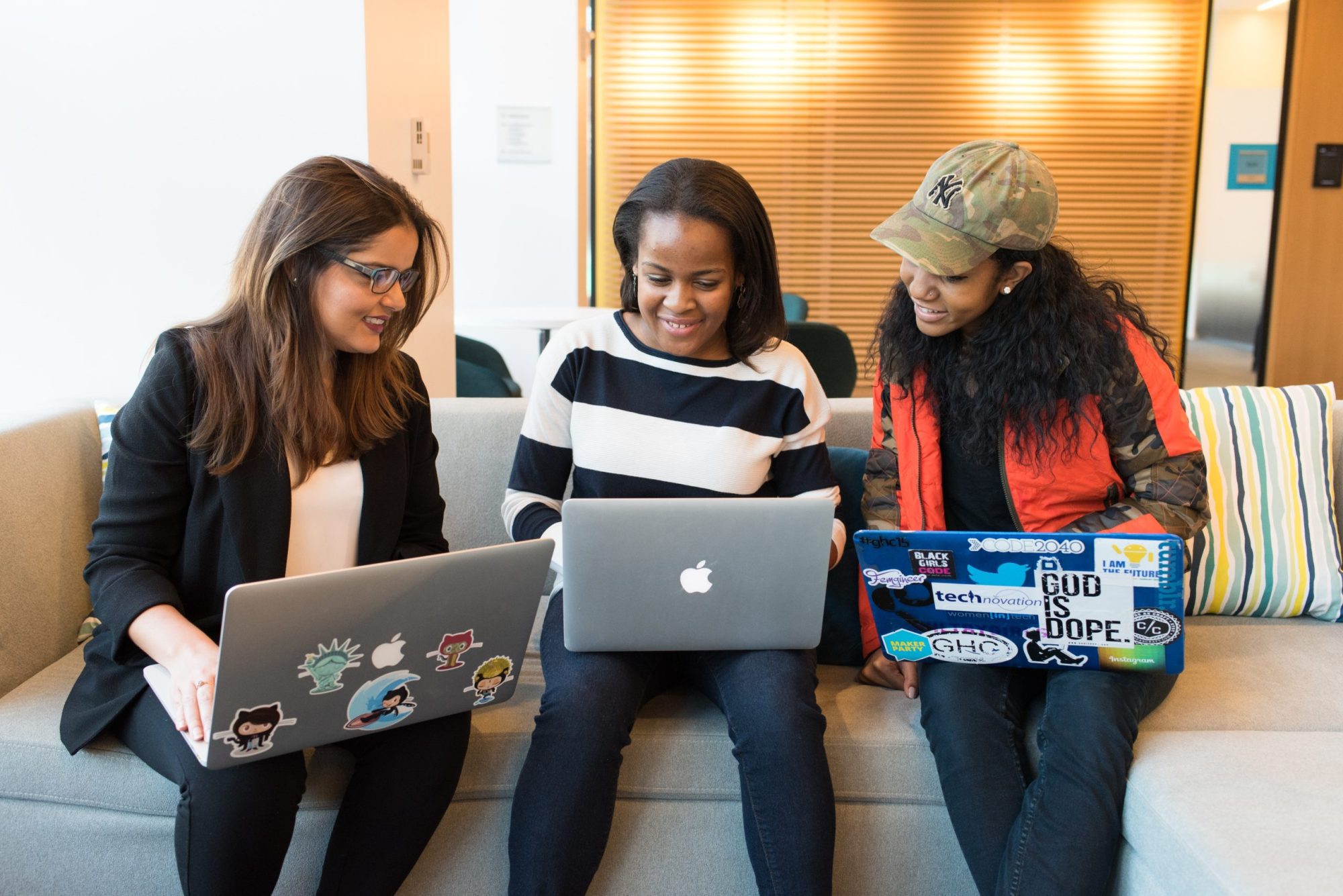The millennial generation is reshaping the workplace as we know it. Their unique communication style, values, and preferences change how businesses function and interact with employees.
Understanding and adapting to communicating with millennials is crucial for organizations that want to harness the potential of this generation and create a collaborative, inclusive, and productive work environment.
Key Takeaways
- Organizations must understand and respect the communication preferences of millennials to foster a harmonious workforce.
- Leaders should embrace tech-savvy tools, provide constructive feedback, and prioritize work-life balance for their millennial employees.
- Face-to-face communication is essential for developing strong workplace relationships with millennials, who are setting the stage for a more inclusive future of work.

Understanding Millennial Communication Preferences
The millennial generation has a distinct communication style sets them apart from previous generations like baby boomers and Gen Xers. Millennial employees are characterized by their:
- Technological fluency
- Collaborative mindset
- Commitment to personal growth and development
- Preference for work-life balance and meaningful work
These qualities influence their communication preferences and shape how they interact in the workplace.
Understanding and adapting to the communication preferences of the millennial generation is key to harnessing their immense potential for your organization. Millennials crave feedback and value open communication channels that allow them to engage with their peers and managers effectively.
Generational differences in communication styles can lead to misunderstandings and conflicts in the workplace if not addressed properly. By acknowledging and respecting these differences, organizations can create an environment that fosters professional growth, bridges generational gaps, and supports a harmonious workforce.
Adapting to Millennials’ Communication Style
Leaders who wish to effectively engage millennials in the workplace must adapt to their unique communication style. Millennials typically adopt a more direct communication style, prioritizing brevity and clarity, which differs from previous generations’ communication styles.
This preference for straightforward communication is reflected in their desire for regular feedback and their ability to engage with older generations personally.
Leaders can leverage tech-savvy communication tools to foster an atmosphere conducive to millennial success in the modern workforce, offer constructive criticism and feedback, and encourage work-life balance. Let’s delve into these three key aspects of adapting to millennials’ communication style.
Tech-savvy communication tools
Technology plays a pivotal role in shaping the communication channels preferred by millennials. Embracing tech-savvy communication tools, such as social intranets and virtual meetings, can help engage millennials in the workplace and drive success.
Social intranets are intranet software that enables younger employees to communicate with one another in a real-time virtual setting.
This platform allows millennials to interact with their peers and managers, creating a collaborative and connected work environment.
A company intranet facilitates communication by providing a platform to deliver information, news, and updates across the organization and allowing employees from different age groups to comment, ask questions, and further the discussion. This fosters a sense of inclusivity and encourages open communication among employees.
Virtual meetings offer a platform for collaboration and communication and increased flexibility in scheduling and location, making them an effective tool for engaging millennials in the workplace where they thrive. These meetings can include instant messaging features, allowing for real-time conversations and feedback, which millennials crave.

Constructive criticism and feedback
Millennials crave feedback, and providing them with constructive criticism can help them grow professionally and feel valued. Their communication style for feedback is characterized by clarity, directness, and collaboration. If not provided with accurate feedback, millennials may become disinterested and disengaged.
Providing regular feedback, both positive and negative, is a good strategy to make millennial employees feel supported and valued. This feedback should be:
- Specific
- Actionable
- Delivered in a supportive manner
- Focusing on areas for improvement
- Acknowledging their achievements.
Creating a workplace culture of continuous feedback and open communication can help millennials thrive, increasing productivity, employee satisfaction, and overall business success. By fostering an environment where feedback is valued and embraced, organizations can unlock the full potential of their millennial workforce.
Work-life balance and flexibility
Millennials, who often prioritize personal well-being alongside career success, value work-life balance and flexibility. Work-life balance and flexibility can assist the younger generation, particularly millennials, in alleviating stress, enhancing productivity, and augmenting job satisfaction at a young age.
Employers can facilitate work-life balance and flexibility by providing flexible working hours, remote opportunities, and paid time off.
Implementing strategies such as establishing clear expectations, furnishing resources to facilitate work-life balance, and promoting open communication can further support millennials in achieving a healthy balance between their personal and professional lives.
Organizations that appreciate the significance of work-life balance and flexibility for millennials can build an inclusive and supportive work environment, allowing employees to flourish both personally and professionally. This, in turn, can lead to higher employee engagement, productivity, and overall success.
Bridging Generational Gaps in Workplace Communication
Bridging generational gaps in workplace communication can lead to a more inclusive and collaborative work environment for all employees. Some ways to foster intergenerational synergy between millennials and baby boomers include:
- Promoting collective education
- Utilizing the experience and creativity of young people
- Encouraging open and respectful communication
- Providing opportunities for mentorship and reverse mentorship
By implementing these strategies, organizations can create a work environment that values and leverages employees’ strengths from different generations.
The collaboration trait of millennials can create a more dynamic and inclusive atmosphere, connecting different generations and encouraging mutual learning. Implementing a reverse mentoring program, fostering a culture of respect, and creating a flexible work environment are effective strategies for addressing generational differences in workplace communication.
Organizations that appreciate and accommodate each generation’s unique qualities and communication preferences can foster a harmonious work environment, promoting employee engagement, productivity, and success. This inclusive approach can also lead to increased innovation and growth, as diverse perspectives and experiences are valued and shared across the organization.

The Power of Face-to-Face Communication with Millennials
Despite their preference for digital communication, face-to-face interactions with millennials can help build stronger workplace relationships and trust. Face-to-face communication facilitates:
- More meaningful conversations
- Improved understanding among colleagues
- Increased trust
- Supports effective problem-solving and collaboration for millennials in the workplace.
The primary challenge of face-to-face communication for younger employees, such as millennials, is the effort and time necessary to coordinate meetings and conversations.
Finding a suitable time and location for all participants to gather can also be challenging. However, the benefits of face-to-face communication far outweigh these challenges, as it fosters deeper connections and understanding among employees.
Successful communication with millennials, who typically prefer directness, requires preparation for the conversation, openness to different perspectives, respect for each other’s opinions, and a readiness to compromise. Additionally, it is essential to provide clear instructions and expectations and follow up on any commitments.
Encouraging Professional Development and Growth for Millennials
Fostering professional development and personal growth for millennials can result in heightened employee engagement, creativity, and general business prosperity. Millennials anticipate career growth and strongly desire to learn and develop new skills.
Organizations can leverage millennials’ personal growth and development drive by providing frequent feedback, training sessions, and career progression opportunities.
Prioritizing continuous learning, skill development, and a supportive environment can maximize the engagement and retention of millennial employees.
By recognizing the value of millennials’ distinct perspectives and encouraging intergenerational collaboration, organizations can create a climate that retains millennials and capitalizes on their potential to drive innovation and growth.
This can ultimately lead to increased productivity, employee satisfaction, and overall success for the organization.
Building a Millennial-Friendly Work Environment
Constructing a millennial-friendly work environment requires an understanding of their values, communication preferences, and provision of opportunities for growth and development. Some key elements of a millennial-friendly work environment include:
- Flexibility in work hours and location
- Open and transparent communication channels
- Emphasis on work-life balance
- Opportunities for continuous learning and development
- Collaboration and teamwork
- Recognition and feedback
By incorporating these elements, employers can create a work environment that attracts and retains millennial talent.
Organizations can provide avenues for growth and development through mentorship programs, professional development courses, and other resources to assist millennials in achieving their professional objectives.
In addition, implementing flexible work arrangements such as remote work, flexible hours, and job sharing can help meet the needs of millennials and contribute to a more inclusive and supportive work environment.
Emphasizing meaningful contributions and fostering a culture of open communication can also help create a millennial-friendly work environment. By understanding and embracing millennials’ unique qualities and preferences, organizations can build a workplace that supports their growth, development, and overall success.
The Impact of Millennial Communication on the Future of Work
Millennial communication is set to shape the future of work, with an expected increase in flexibility, technological innovation, and an emphasis on collaboration and inclusivity.
Millennials have transformed how we work and communicate, leading to the reimagining of office spaces and the adoption of new and creative approaches to business.
Technological innovation is integral for businesses to remain competitive in the future. It enables companies to:
- Stay ahead of the competition
- Generate new prospects for growth
- Embrace the communication preferences and technological fluency of millennials
- Drive innovation
- Adapt to the rapidly changing business landscape.
Promoting collaboration and inclusivity in the workplace can help organizations capitalize on their employees’ diverse perspectives and experiences, leading to increased innovation, growth, and overall success.
By understanding and adapting to millennial communication styles, organizations can create a work environment that supports the needs and preferences of this influential generation, ultimately shaping the future of work.

Summary
In conclusion, understanding and adapting to millennial communication preferences is crucial for organizations that want to harness the potential of this generation and create a collaborative, inclusive, and productive work environment.
By embracing their unique communication style, leveraging technology, providing constructive feedback, and promoting work-life balance, businesses can foster an atmosphere that supports their millennial workforce’s growth, development, and success.
As we look to the future, the impact of millennial communication on the world of work will continue to shape how organizations innovate, collaborate, and thrive.
Frequently Asked Questions
What is the communication style for Millennials?
Millennials prefer to communicate through texting and social media, as these methods allow them to receive and respond to messages at their own pace without the anxiety of a phone call. They also use social media platforms to access news and other important information.
Why do Millennials have difficulty communicating?
Millennials prefer to communicate via text and can be awkward with direct personal communication. This is because they grew up texting instead of calling friends and family and believe talking on the phone is inefficient.
Experts suggest taking care of the words used when communicating with Millennials, either in person or electronically.
How do Millennials like to be spoken to?
Millennials appreciate direct and succinct communication, so it is best to be honest, straightforward, and concise when speaking with them. Avoid small talk in favor of getting the job done accurately and efficiently.
How do you connect with Millennials?
Engage with Millennials on mobile platforms, create a sense of community, use social media to reach out, demonstrate an understanding of their values, provide constructive feedback, and be inclusive.
How can organizations adapt to millennials’ communication styles?
Organizations can effectively adapt to millennials’ communication styles by leveraging technology, providing meaningful feedback, and promoting work-life balance.
